1 December 2021: Platinum’s demand growth potential suggests a breakout from gold and upward pressure on price: Platinum’s daily returns are approximately double those of gold’s which makes it attractive to systematic traders. This means that short-term moves in the platinum price are heavily influenced by changes in the gold price. Longer term pricing trends in platinum are determined by supply/demand and macro-industrial drivers, which tend to have a greater influence when the pricing relationship with gold goes through periods of weakness. The relationship with gold appears to be weakening again as we move into the end of 2021. This could be a precursor to platinum outperformance in 2022 on a recovery in vehicle production as the semiconductor shortage begins to ease. We note, however, that the continued spread of the Omicron variant may pose a headwind.
Platinum Perspectives
WPIC® research is free of charge. It can be consumed by asset managers under MiFID II
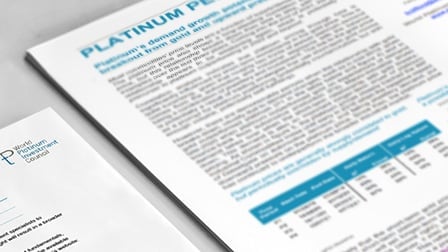
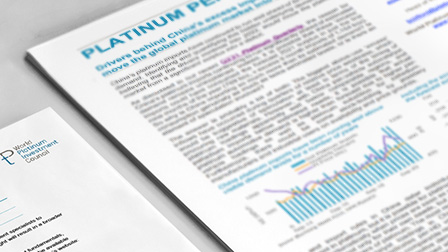
1 November 2021: Drivers behind China’s excess import trend could move the global platinum market into deficit: China continues to import platinum at volumes that are almost twice its visible demand levels. The underlying demand drivers behind this momentum remain unexplained, but ‘excess’ China imports so far in 2021 appear to have been sufficient to consume all of the forecast surplus presented in the latest Platinum Quarterly, and to push the market into a deficit. In this report we examine possible reasons for this behaviour in China, which include opportunistic price sensitive stock-building, higher per-vehicle platinum loadings, and platinum substitution for palladium. Whilst these theories are compelling, we cannot present data to prove them. However, we can demonstrate that should China imports continue at current rates, the forecast 2022 surplus of +637 koz would potentially become a deficit as large as -255 koz.
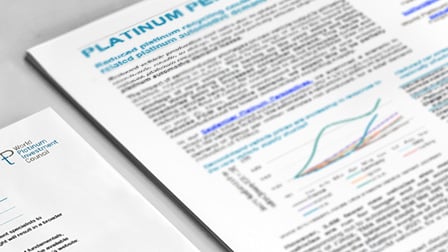
1 October 2021: Reduced platinum recycling could help offset chip-related platinum automotive demand losses: Reduced vehicle production and sales due to global semiconductor constraints results in delays to end-of-life vehicle scrappage. This reduces platinum autocatalyst recycling supply and partially offsets chip-related platinum automotive demand losses. Examining a scenario in which semiconductor shortages reduce 2021 production by 3.4M new vehicles (LV+HD), we estimate that the platinum surplus would increase by 116koz. On the flip-side, we calculate that autocatalyst recycling supply will be reduced by 21koz per million vehicles being run for longer instead of being scrapped. This moderates the chip-shortage linked increase to our forecast platinum surplus to only 44koz in 2021.
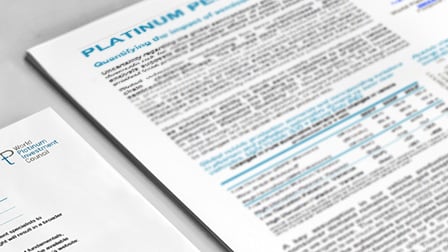
1 September 2021: Quantifying the impact of semiconductor constraints: Uncertainty regarding the scale of the impact from the global semiconductor shortage increases downside risk for automotive demand for all PGMs. However, our analysis suggests that automaker efforts to protect higher margin product lines protects platinum demand more than palladium. We estimate the spread in automotive platinum demand between the different global vehicle production scenarios could be as much as 369koz in 2022 compared to 843koz for palladium. Including the scope for automakers to prioritise higher margin products, typically large light vehicles and heavy-duty vehicles which is more favourable for platinum demand. This could reduce the change in platinum demand from 35koz to 28koz for every million vehicles of lost automaker production but would increase palladium demand from 105koz to 109koz. This highlights that whilst palladium is more sensitive to total vehicle production losses, it is less sensitive to changes in the automotive production mix than platinum.
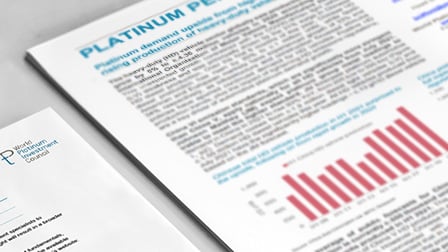
1 August 2021: Platinum demand upside from higher loadings and rising production of heavy-duty vehicles: The average of public forecasts for Chinese H2 2021 HD diesel production is currently c.550 thousand units despite over 1 million units produced in H1 2021. Chinese HD vehicle production and sales are typically strongly correlated with investment in construction and infrastructure. This spending is expected to increase in H2 2021 to mitigate potential economic underperformance in China. This suggests upside potential for forecast Chinese HD diesel production. Indeed, if second half production were merely to match the pre-COVID H2 2019 level of c.750 thousand units, Chinese automotive platinum demand would increase by an additional 80 koz. This could be higher as average loadings in China appear low at c.13 g/unit compared to North American loadings of c.25 g/unit.
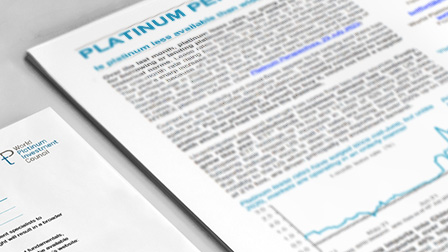
1 July 2021: Platinum less available than widely thought as indicated by the recent spike in platinum lease rates: Despite no identifiable disruptive event, lease rates spiked to well above historical norms, rising from 0.03% to 2.6% over the past month. We believe the recent spike is driven by unavailability of platinum to meet stronger than expected demand. Unanticipated demand strength in 2021 has come from strong investment demand, and record imports into China in support of growing industrial demand, higher heavy-duty vehicle production and platinum substitution for palladium. Availability of platinum appears to be limited for real physical demand reasons. As such, this market shortage is likely to be sustained through 2021, and could place further upward pressure on price.
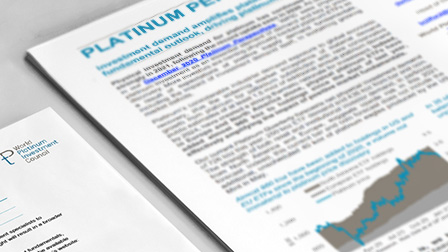
1 June 2021: Investment demand amplifies platinum’s positive fundamental outlook, driving platinum revaluation: Physical investment demand for platinum has continued to grow strongly in 2021, following the record uptake seen in 2020. Platinum’s industrial demand exposure to global economic recovery, plus the widening market acceptance of material demand growth from platinum for palladium substitution, have created a strong thematic rationale for investment. Our current Platinum Quarterly forecasts net physical investment demand of 726 koz this year, and we believe there is an upside risk in this 2021 forecast. Surging Chinese automotive related spot platinum buying has added further fundamental support. Platinum’s delayed response to global recovery presents a significant investor opportunity, with the combination of Chinese spot buying and strong physical investment demand driving a likely revaluation.
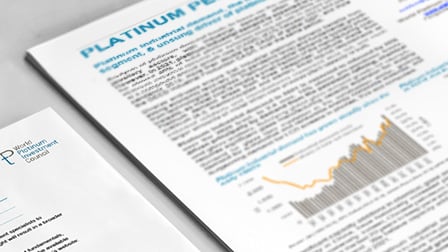
1 May 2021: Platinum industrial demand in 2021 is expected to rebound by 25% over the 2020 level, to 2.4 moz, 13% above pre-pandemic levels. It will also be the largest net demand segment: Analysis of platinum demand tends to focus on the automotive and jewellery sectors, with industrial demand often overlooked. However, in 2021 platinum industrial demand is expected to account for almost 40% of total platinum demand net of recycling supply, due principally to demand from the petroleum refining, chemical and glass sectors. Significant capacity additions in chemical, glass and petroleum production, notably in China, have historically increased platinum industrial demand growth materially, and we believe capacity additions in these three areas will continue beyond 2021. More investors are becoming aware of this and platinum industrial demand growth adds to platinum demand growth from automotive and investment which, in the face of constrained platinum supply, drive sustained platinum deficits in 2021 and beyond.
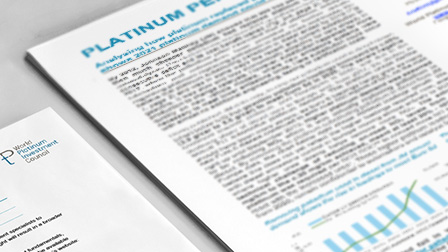
1 April 2021: Analysing how platinum replaced palladium in diesel shows 2021 platinum demand could rise by c.100 koz: Johnson Matthey (JM) showed that by 2012, over 800 koz per annum of then cheaper palladium had replaced platinum in diesel autocatalysis. This substitution trend reversed from 2014 as the cost benefit waned, and in achieving compliance with Euro 6d emissions regulations, some platinum automotive demand, assumed to be reducing NOx, was simply replacing palladium in diesel. Removing substituted volumes from loadings analysis, shows that European platinum demand data does not yet reflect the higher loadings required to meet Euro 6d. Because of the extreme technical challenge of reducing on-road NOx emissions from c.800 mg/km to c.20 mg/km, we believe at least 20% - 40% more platinum was required to help achieve this. The full effect of the c.20% higher loadings per European diesel car could add over 100 koz of additional platinum demand from 2021 onwards.
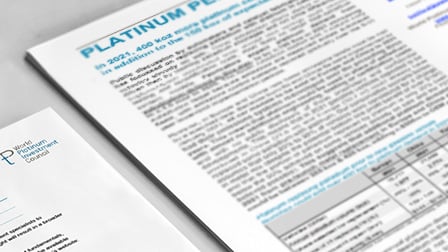
1 March 2021: In 2021, 400 koz more platinum could replace palladium in addition to the 150 koz of expected ‘substitution’: Public discussion by automakers and catalyst fabricators to date has focussed on replacing palladium with platinum in catalysts of vehicles already on sale, with fabricators expecting such substitution to be c.150 koz in 2021 increasing to c.1.5 moz annually by 2025. However, this narrow definition of substitution does not cover metal replacement in models in development, prior to launch. In European and Chinese auto markets, all car models to be sold in 2021 had their emissions systems redeveloped over the preceding three years to comply with Euro 6d and China 6a regulations. This meant platinum could be used in place of palladium with almost no additional engineering, testing or certification costs and with no public disclosure. Indeed, if only 30% of palladium was replaced by platinum in 20-30% of the c.32 million gasoline light vehicles expected to be produced in China and Europe this year, such pre-launch metal replacement could be between 285 koz and 428 koz of additional platinum autocatalyst demand in 2021.
